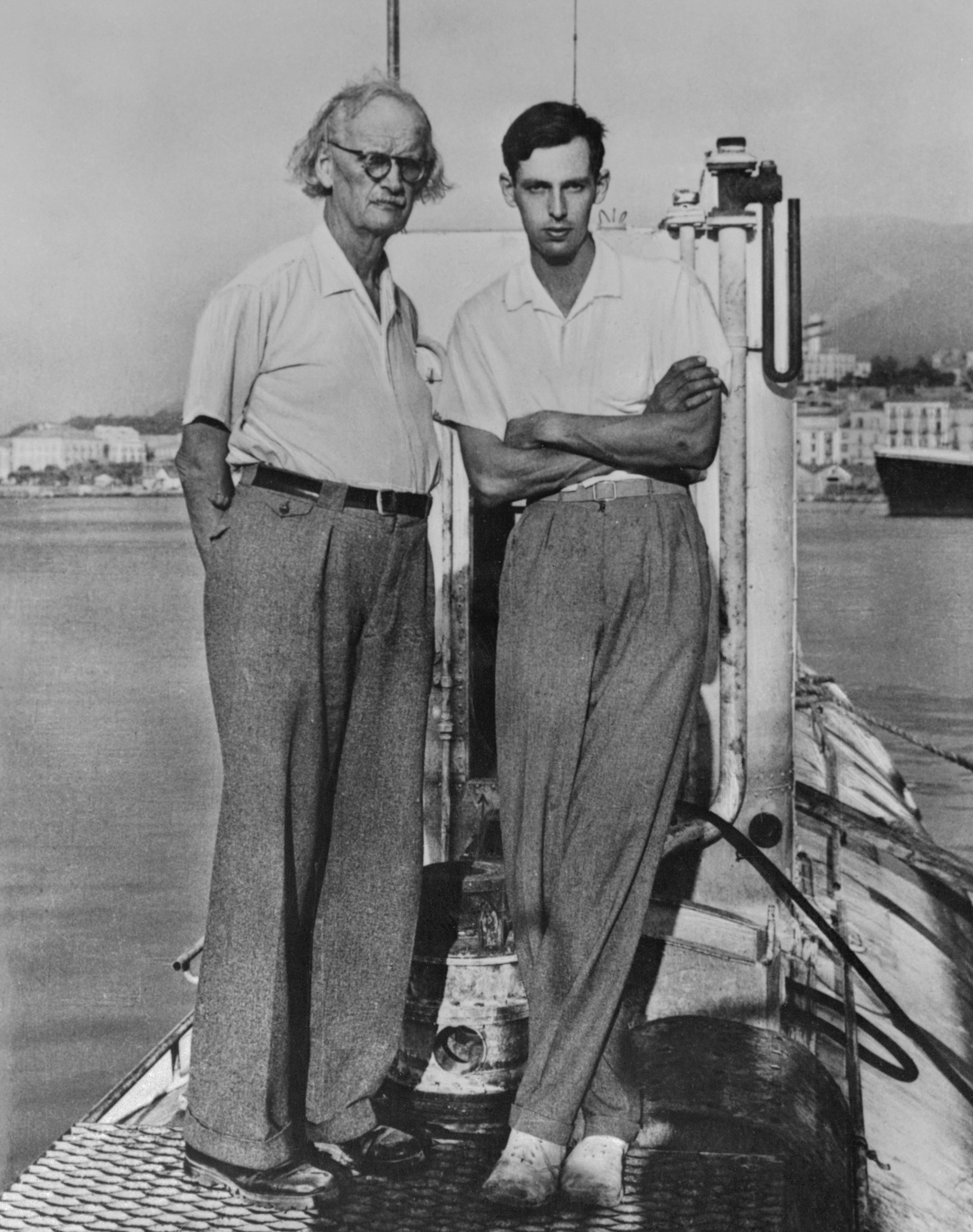Bathyscaph, << BATH uh skaf, >> is a diving craft used for deep-sea observation. It can dive more than 6 miles (10 kilometers) to explore the deepest parts of the ocean. The craft consists of a thick-walled steel sphere attached to a large hull. The sphere protects the crew and scientific equipment from crushing water pressure. The hull contains several compartments filled with gasoline. The gasoline is lighter than water and gives the craft buoyancy.

The sphere is heavier than water, and the hull is lighter than water. To make the bathyscaph go down, the diver releases some of the gasoline or lets some seawater into the hull. The weight of the sphere then pulls the bathyscaph downward. To come up, the diver lightens the bathyscaph by releasing ballast from special sections in the hull. The bathyscaph has small screw propellers, which are turned by battery-driven motors, to move the bathyscaph horizontally.
The bathyscaph was designed by Auguste Piccard (1884-1962). It was first tested in 1948. Today, other types of submersibles (deep-diving craft) now perform the tasks once done by bathyscaphs.
See also Diving, Underwater (Diving in Vehicles) ; Piccard, Auguste .
